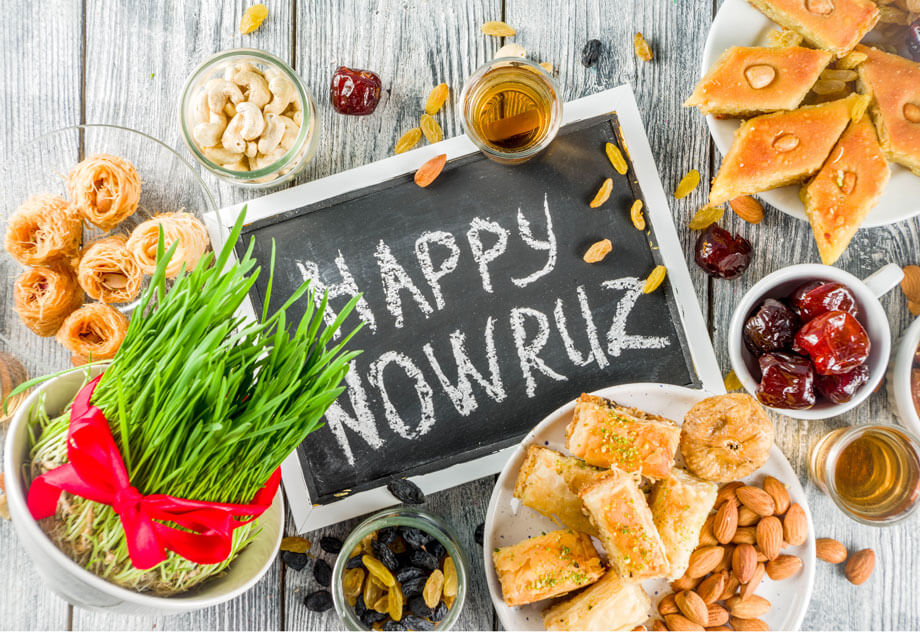In most countries, including the U.S., people celebrate the start of the new year on Jan. 1, in the middle of the winter. However, there are some countries around the world where their new year starts in the middle of March, which would be the start of the spring. To be more precise, it is observed each year on the 21st of March in some countries, including Afghanistan, Azerbaijan, India, Iran, Iraq, Kyrgyzstan, Kazakhstan, Pakistan, Tajikistan, Turkey, Turkmenistan and Uzbekistan.
The term “Nowruz” comes from combining two words in Persian, new and day. In Iran, Nowruz is timed using the Solar Hijri algorithmic calendar based on exact astronomical measurements, and employs a sophisticated intercalation technique, making it the most accurate calendar among the 40 calendars in the world. The specific moment of the new year is the time when the sun reaches its origin of movement (which is at the same point as the vernal equinox). A year is about six hours more than 365 days, and on March 20 of each year, the distance of the sun from the equinox is calculated. So, whenever the distance of the sun from the equinox equals zero, that would be the moment of the new year. The year starts at the midnight closest to the vernal equinox in Iran — specifically, at the Iran Standard Time meridian at longitude 52.5° east. If the new year’s moment calculates to be in the afternoon (after 12 p.m.), the next day would be the first day of the year. So, each year there is a precise time for the new year (for instance, 19:03:26 on March 20 this year) when family and friends gather and count down to the new year.
There are so many stories about the foundation of Nowruz. According to the Shahnameh (one of the most famous Iranian historical poetry books), the mythological Iranian King Jamshid is responsible for the founding of Nowruz, as he protects humankind from a winter that would kill all living things. Jamshid built a gem-encrusted throne to overcome the terrible cold. He had demons lift him into the heavens, where he sat, glowing brightly like the sun. The world’s creatures gathered and strew gems about him, proclaiming that this was the New Day (Now Ruz). This was the first day of Farvardin, which is the Iranian calendar’s first month.
One of the most famous holiday customs is the “Haft-Sin” table, which means a table that includes seven items that start with “S” in Persian. Traditionally, family members assemble around the Haft-Sin table before Nowruz to wait for the exact moment of the new year to celebrate. According to the Zend-Avesta book — the text of Zoroastrianism religion, composed in Avestan, an early Iranian language — the number seven and the letter S in the Haft-Sin table are related to the four elements of fire, earth, air and water, as well as the three life forms of humans, animals and plants. The explanation has been reduced in recent times to suggest that the Haft-Sin elements are: sabzeh (Persian: سبزه) — wheat, barley, mung bean or lentil sprouts grown in a dish; samanu (Persian: سمنو) — a sweet pudding made from wheat germ; Persian olive (Persian: سنجد); vinegar (Persian: سرکه); apple (Persian: سیب); garlic (Persian: سیر); and sumac (Persian: سماق). A mirror, candles, painted eggs, a bucket of water, goldfish, coins, hyacinth and traditional confectioneries may also be seen on the Haft-Sin table. A “book of wisdom” such as the Quran, Bible, Avesta or a famous poetry book could also be included. The origins of Haft-Sin are unknown, and it is thought to have gained popularity in the last century.
This year, Iranians gathered in College Park, Maryland, on the weekend before the start of the new year to celebrate the new year with group dancing, Iranian foods and sweets, games, live music, theaters and shows, and had a great time beside a Haft-Sin table. I think spring is one of the best seasons, and as the earth, the plants and nature regenerate themselves, we can celebrate the newness of nature, the excellent weather, and the blossoms, as well. So, as it has been a new year in some parts of the words, happy spring and new year, everyone!
Related Content
- We Will Bloom Again: A Poem
- On Entropy, Human Connection and Healing
- Holiday Construction and Conversation
Want to read more from the Johns Hopkins School of Medicine? Subscribe to the Biomedical Odyssey blog and receive new posts directly in your inbox.
